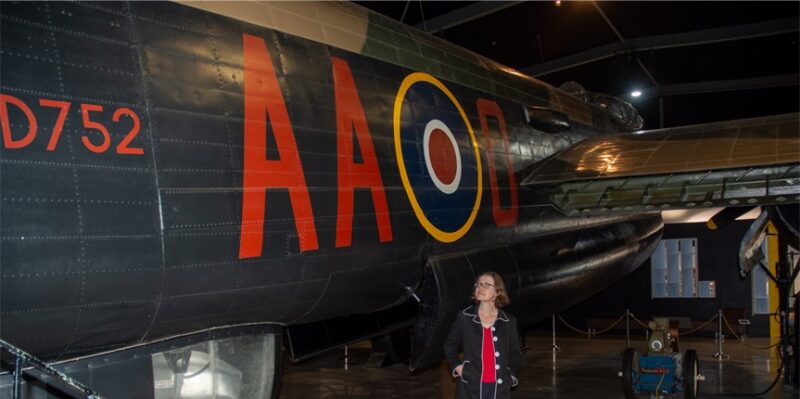Operations
Operations
75 (NZ) Squadron’s Fateful Sortie to Homberg
During the summer and autumn of 1944, crews of 75 (NZ) Sq. attacked targets ranging from the northern ports of Bremen, Kiel, and Stettin to Stuttgart in the south, but the major effort was devoted to the Ruhr against such familiar targets as Essen, Duisburg, and Cologne. As part of the renewed Allied focus on German oil production, twenty-six bombers departed Mepal on the evening of 20 July for a night raid against the synthetic oil refinery at Homberg, near Duisburg on the western edge of the Ruhr Valley.
It turned out to be the worst night in the Squadron’s history with seven of the twenty-six Lancasters shot down and forty-nine crew lost. Only eight of the men aboard those aircraft survived. Sixteen of those killed were New Zealanders and another four New Zealanders were killed, when the crew of a 514 Sq. Lancaster also on the mission was lost.
The Meyer crew: Back L-R: Sgt Bill Brown (rear gunner), Sgt George Payne (mid-upper gunner), F/O David Mercier (navigator), unknown, F/Sgt Arnel Meyer (skipper), unknown. Front: L-R: Sgt Glass (flight engineer), F/O Simon Snowden (bomb aimer).
(Credit NZBCA archives, Arnel Meyer collection)
In all twenty of the 147 Lancasters on the raid were lost – fourteen percent (75’s losses were thirty percent). Navigator David Mercier, flying with fellow New Zealander Arnel Meyer described it to Max Lambert as a shambles.
“Don’t know whether they knew we were coming but the fighters were waiting for us as we crossed the (Dutch) coast. Kites were going down all the way in….to the Ruhr and back out again. Happy Valley?…it was some of the heaviest and most accurate flak I’ve ever seen. 3 Group (of which 75 Sq. was a member) really took a beating”.
The ORB summary of the op reads:
“Twenty-six aircraft took off, as detailed, to attack the oil refinery at Homberg. Nineteen aircraft were successful in bombing the target, with the aid of markers, which seemed well concentrated. Two good explosions were seen, and smoke came up from the target area. Heavy A.A. fire was moderate, but fighters were very active, eight combats taking place. Seven aircraft failed to return, the captains were AUS22776 W/O. Gilmour, H., NZ428819 F/S. Howell, E., NZ421829 F/S. Mackay, K., NZ422057 F/S. Davidson, N., NZ42488 W/O. Whittington, H., NZ413219 F/S. Roche, G. & NZ414560 P/O. Burtt, H.”
All the 75 squadron Lancasters that were destroyed came down over Holland, with the exception of ND800-J which was lost without trace. It seems likely that all were the victims of fighters over Holland; three shot down on the way to the target, four on the way back.
The loss left a huge gap in the squadron. Yet, as required, places were filled and crews of 75 (NZ) flew back to the same target three more times. Such was the expectation placed on bomber crews. The final operation on 20 November was again fateful, with three aircraft lost and thirteen casualties, with a further eight airmen becoming POWs.
Remembered at MOTAT
The Lancaster on display at MOTAT carries, on its starboard flank, the squadron code AA-O and serial number ND752, commemorating one of the 75 Sq. aircraft lost that night. ND752 was piloted by Henry Burtt of Whanganui, who was nearing the end of his tour. Also in the crew was Gottfred Gillan of Auckland.

MOTAT’s Lancaster – it’s starboard fuselage painted to represent ND-752 AA-O, lost on the Homberg raid.
(Credit: Chris Newey)
